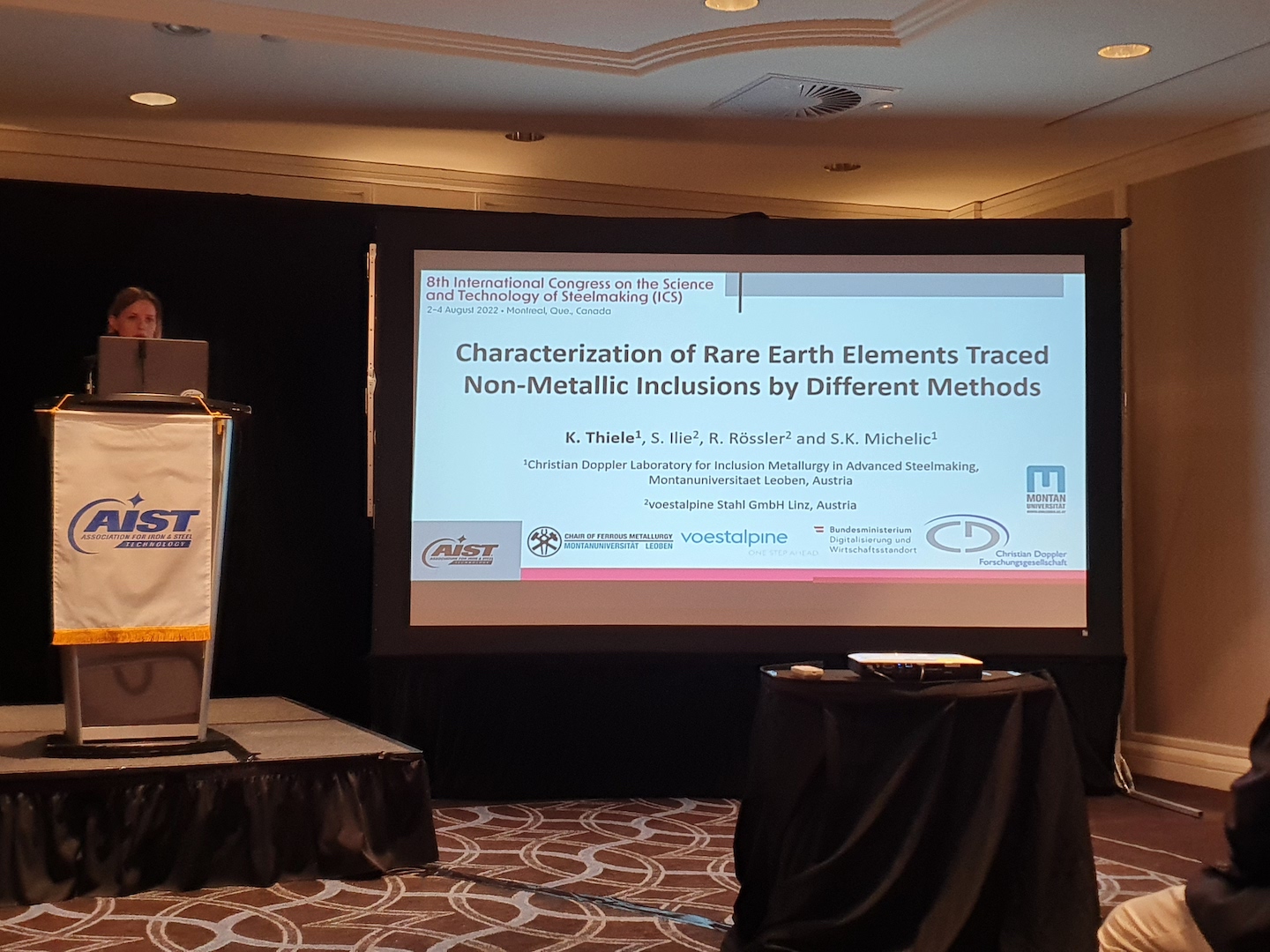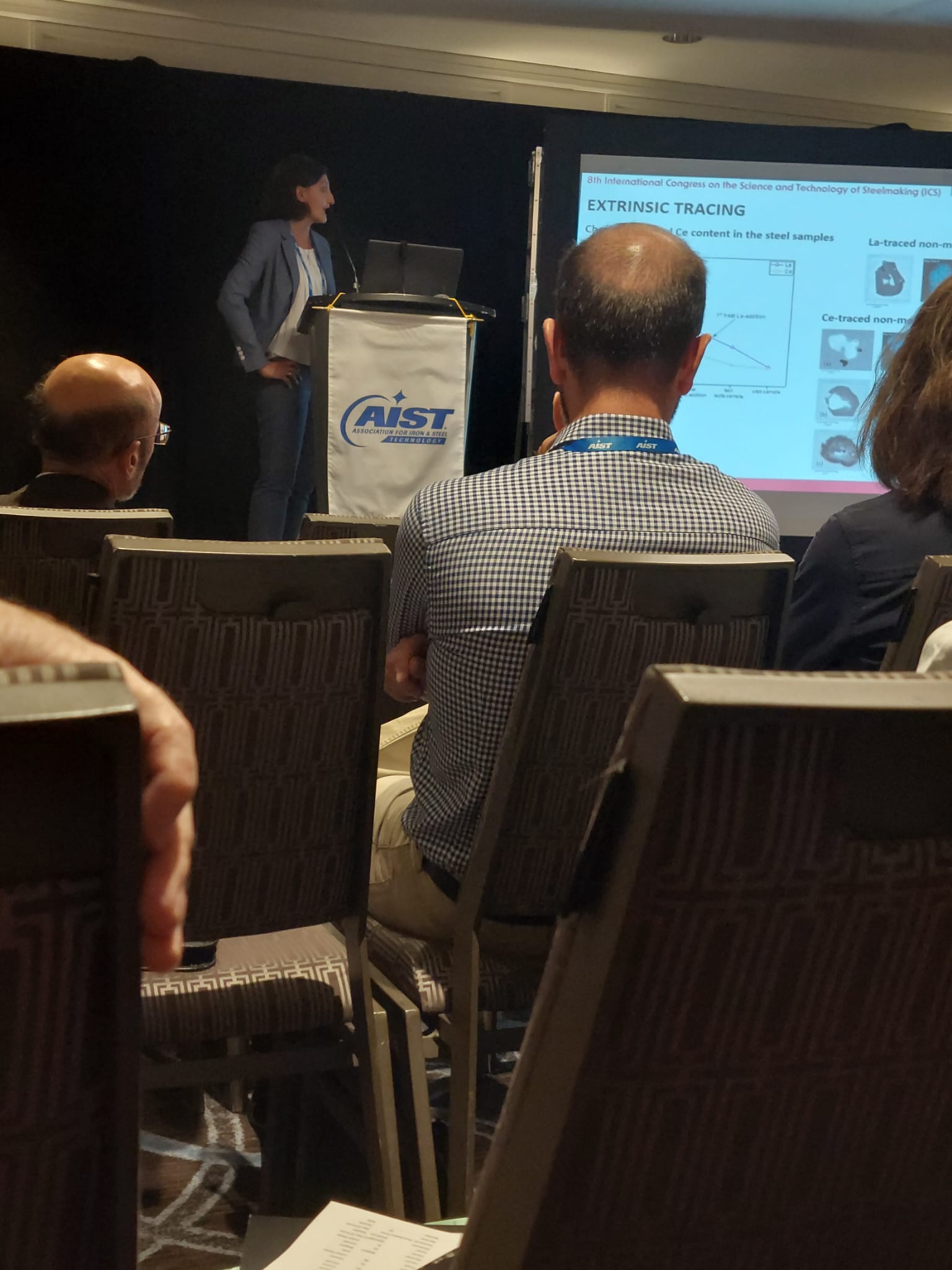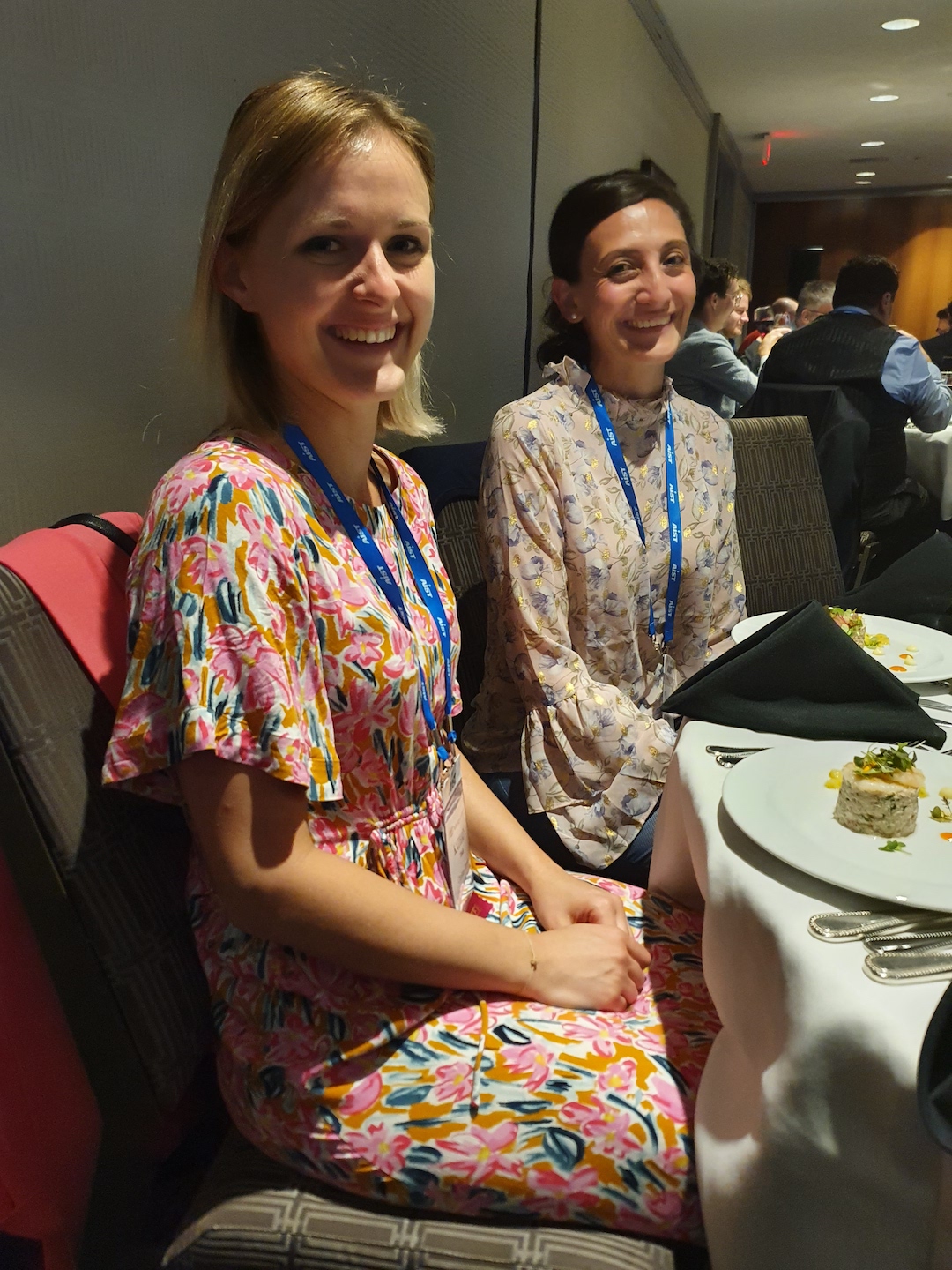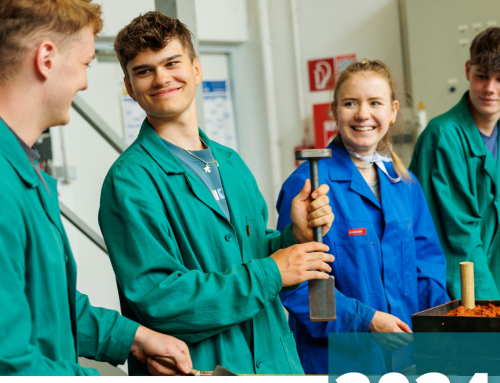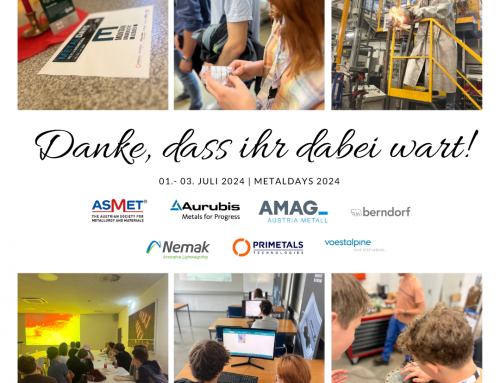Kathrin Thiele and Susanne Michelic participated at the 8th International Congress on the Science and Technology of Steelmaking which was held from 2nd to 4th August in Montreal, Canada.
Susanne gave a plenary talk on “Different approaches to trace non-metallic inclusions in steel” and was also a member of the scientific committee. One of the introduced approaches – Rare earth element fingerprints – is established within a scientific cooperation with the Chair of General and Analytical Chemistry at MUL. Kathrin presented a paper of her ongoing PhD work entitled “Characterization of rare earth elements traced non-metallic inclusions by different methods”.
Both topics are part of a project cooperation with voestalpine Stahl GmbH in Linz in the frame of the Christian Doppler Laboratory for Inclusion Metallurgy in Advanced Steelmaking.
Conference Schedule: https://www.aist.org/conference-expositions/ics/



